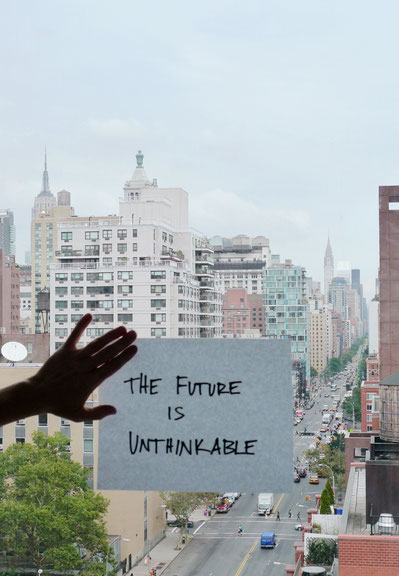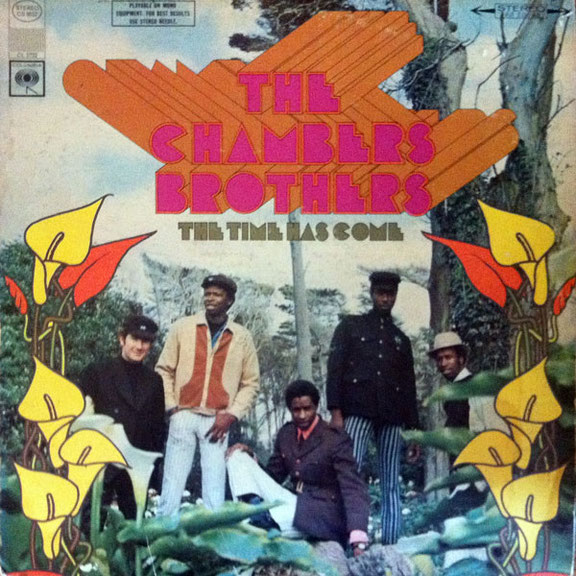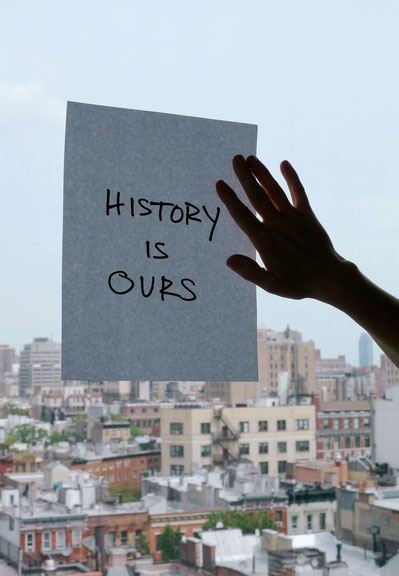We are living in the ongoing advancement of the rupture. All time is concurrently present in and around us.
The Undying Present, Erika Staiti
The greatest swindle of the story that shaped the time between 1989 and 2008 was not just that market utopianism had arrived and therefore the great gears driving both revolutionary and developmental time were disengaged, but that the temporal complexity of this period was obscured. Far from being a moment during which history stopped in its tracks, it was a period in which time seemed to roll backwards, not just due to consumer nostalgia that grasped at modes of production as they were dismantled (which today coheres as craft production, particularly of things associated with the working class…just as class is again deemed a relic), but also due to how social minimums and tolerances associated with the social welfare state or Keynesian economics were rolled back. Space too was drawn into this limited present as left critiques sketched an ever-expanding capitalism, engulfing the globe, eroding and incorporating local differences, and unifying it under a singular economic system and time. It was not possible to fetishize an imagined outside to capitalist modes of production, for example, nor an alterative space within Empire (even with Empire figured as contingent to immanent forces).
But rather than expanding through innovation or through the coercion of higher wages (those twin promises of modernity), capitalism turned to its old tricks of dispossession of neighourhoods, land, and resources and by squeezing out more surplus value from labour. Slowly those chapters from Capital vol. one which described a stage or a moment in time in the development of capitalism – the chapter on the working day and on primitive accumulation – were being reread in relation to the present. From the Midnight Notes Collective’s volume on the “New Enclosures” (1990), to Michael Perelman’s book (2000) on “the secret history of primitive accumulation”, to David Harvey (2003) locating “accumulation by dispossession” as powerfully present, and to very recent work by Indigenous scholar Glen Coulthard (2014) who identifies dispossession as central to settler-colonialism today, dispossession has been a focal point in understanding how capitalism and liberal democracy reproduces itself. In the crash of modernist developmental promises, as uneven and incomplete as they were, there seemed to be a new cruelness to how capitalism reproduced itself by looping back through its own bad history; this doubling back, rather than the promised adjustment and improvement of a liberal democracy that was the basis of the end of history paradigm, had become the experience of the present. Ironically this doubling back brought forward old critiques that can be reread in the light of the present.
That knot of time, from 1989 to the financial crisis of 2008, punctuated by the defeat of the cultural promises of globalization by the reactions to September 11, 2001, is also shaped by dynamic of neoliberalization that creates an odd temporality characterized by, as Jamie Peck puts it, “not so much a triumphal, forward march as a series of prosaic ‘forward failures’.” This is startlingly different than the descriptions of the political and cultural possibilities of globalization which emphasized a positive process of dissolution and articulation – from the erosion of national borders to the emphasis on local ways of doing spreading globally in a global-local nexus, to a withering of national identities and the emergence of new hybrid subjectivities and knowledges. Today, there is little trace of this optimism as borders and national identities harden yet again across Europe and elsewhere.
Yet, has a new-found optimism, and even a militant futurity, shifted from erosion and articulation to rupture and reconfiguration? The conditions of neoliberalization, even with its failures figured as positive adjustments, have ignited enough fuses that social movements and militant imaginations are close to exploding across the globe. The attempt at arresting or killing time has cracked and both history and the future are before us again in multiple forms. Today, Alain Badiou proposes that we are in “a time of riots whereby a rebirth of History….is signaled and takes shape: this is also the rebirth of the idea, specifically “the idea of Communism, revisited and nourished by what the spirit of diversity of these riots, however fragile, teaches us.” And Andy Merrifield spots a new movement springing from the disgust of an “asset stripping and commons plundering” system: “The tactics of this movement, as well as the tempo of its dynamics, its ebbing and flowing, its crowd coalescence, its just-in-time activism, create a new terrain of struggle that is different from the streets of Paris in the 1960s, different from the campus revolts, different from the barricade-building of old.”
But given this restart, what models do we have to examine the present as a temporal configuration, now that it too can be reimagined? In Marxist Temporalities, Massimilano Tomba argues that, “Much of twentieth-century Marxism remained imprisoned in the unilinear conception of historical time that allowed different social forms to be pigeon-holed as advanced or backward”, but today, against this linearity, “The gambit consists in thinking politically temporal diversities, as against the processual and abstract temporality of Modernity.” Is it possible to also think of temporal diversities active in the present? In the 1920s, the modernist American writer, Gertrude Stein, developed a concept of “the continuous present” that insists on the material present of signs and objects; yet this aesthetic focus also builds a useful political attention, one in which an intense temporality (and a temporality of intensity) coheres. Stein’s construct disrupts narrative’s temporal arrival at meaning and in this way refuses to produce and reproduce meaning through normative ends: the possibilities of meaning are multiplied, opened to difference through repetition. Read through queer temporality, the continuous present refuses the neutrality of time and how things and bodies cohere in it. A queer reading rescues her work from being linked to a form of literary Cubism or of a modernist emphasis on time over space (as in Jameson’s shift between modernism and postmodernism). Stein’s method of syntactic stacking and repetition is not a separation of time and space, nor is it a simple precursor to neoliberalist presentism formed in a modernist time warp.
The radicality of Stein’ present is that it does not construct a singular temporality because it counters the meaning’s narrative arrival. Instead it provides us with a way to think through the current constellation of the present and, in particular, it allows us to concoct another narrative for how we got to this present and what its qualities are. Through pressing the queer reading, an insistence on the temporalities of the present can dislodge what Elizabeth Freeman identifies and defines as chrononormativity, a technique based on, “Manipulations of time [which] convert historically specific regimes of asymmetrical power into seemingly ordinary bodily tempos and routines, which in turn organize the value and meaning of time.” Today chrononormativity is “the use of time to organize individual bodies toward maximum productivity.”
From Henri Lefebvre forward to the critical geographers, space has been seen as a site of struggle as well as the outcome of social struggles and these queer readings of temporality indicate time as a site of contestation over the body and value, and as the site where alternative temporalities can be forged. In a similar manner, when Tomba proposes that the present is the result of a synchronization of the world-market, he locates an asymmetrical power in temporality: “The mosaic of temporalities and forms of exploitation, even when it speaks of inter-relation, poses the diverse times as being in a state of reciprocal indifference, when the real problem is their combination by means of the world-market’s mechanisms of synchronization.” But perhaps the real problem here is not the combination brought on by mechanisms of synchronization, but that a particular combination can produce a chrononormativity that flattens the difference within the mosaic of temporalities. These temporalities are anything but indifferent to each other; rather they are fiercely in competition with one another even as they are inter-related. They could be dependent on each other as well as being locked in a form of survivalist combat. Here Marx’s beautiful and brutal dictum that got so much traction in the critique of globalization, that capitalism annihilates space by time, can be “mapped” onto time: in a present defined by chrononormativity, one form or combination of time annihilates another form of time.
Presentism, particularly one that asserts its inevitability and universalism, is a smoothing out of the plurality of temporalities that are harnessed into the experience of a historical present. Therefore, a presentism that rejects the influence of certain pasts and forecloses the future also smoothes out uneven temporal development. This unevenness is not just a way to mark developments in modes of production along a linear and inevitable route, instead it reflects how capital can wring value out of any mode of production of its making and that creative destruction necessarily creates unevenness. The great swindle of the presentism that we have just exited was to create the impression of a temporal evenness. But how to see this plurality of temporalities, based on unevenness as well, as a potentially emancipatory temporality? Rather than seeing uneven development as a separate point in development, Gavin Smith has emphasized, “Uneven and combined development then, by no means refers to strictly economic sophistication, geographical distinction, or even sociological unevenness. Rather it is an attempt to find a means to respect the historical and contemporary intricacy of socio-cultural forms in the process of their combination.” This combination, Smith proposes, is also a process of “interlacing, articulating – an entire panoply of social and cultural realities.” From there, uneven and combined development gives us a method to grasp that the time of insurrection and militancy before revolutions is multiple (as is meaning in Stein’s present) yet both requires and provides “the moment of combination.” This perspective, in which uneven and combined development holds a variety of temporalities and social and cultural realities and their potentials, reveals how chrononormativity is achieved in a present through a flattening of the potentials of such unevenness and combinations. Alongside the variousness of the present, is there the potential for particular pasts to emerge in the plurality of this uneven and combined temporal development?
Can an attention to the present, particularly a queer reading in the way that Stein’s methodology enables, also bring forth the pasts that are foreclosed by a homogenous presentism? As I’ve argued, this presentism was the trick conjured by the intersection of a particular mode of globalization theory, frothy market euphoria, and neoliberalism’s temporal knot of “forward failures” which attempted to deflect the arrival of a future outside of liberal democracy. However, Natalie Melas argues that the counters to this form of presentism focus energy and strategies forward and backward at the expense of a different engagement with the shaping and experience of the present. She writes, “…terminal presentism has occasioned attention to different modalities of historical reflection and encounter (memory and trauma, for instance) and increasingly to futurity, but less to presentness as such.” To put it another way, the present is an articulation of multiple temporalities and an intensification of presentness would both reveal and produce these alternative temporalities. The terminal present would be seen as both a rejection of a potential future and an outcome (even the developmental outcome!) of chrononormalization in which the potentials in the present are flattened through a temporal enclosing. Through an attention to the contingent nature of the present, Melas flags the question, what pasts can “impinge or intervene” into “the certainties of the present”? This question has been an intense site of artistic production as well, from the bringing forward of minor moments of modernism to the recirculation of the events of past militancies and political encounters.
Melas identifies how the competing temporalities of the present (which includes former futures) can break with terminal presentism and make the present productive. Massimo de Angelis also gives a compelling view of the possibilities of this moment that history bursts apart terminal presentism: “History does not begin after the revolution, but it begins any time there are social forces whose practices rearticulate phase, circular and linear time autonomously from capital, whatever their scale of action.” Embedded within the presentism that reductively seeks to foreclose a future outside of capitalist value practices as well as the potential of pasts that imagined a different present (former futures) is a process that intensifies the present (and the various and competing experiences of it) to reveal or make tangible the multiplicity and unevenness of the present and the potential that it holds. In this way, to paraphrase The Clash, The present is unwritten.
1 See “The New Enclosures”, Midnight Notes 10 (1990), http://www.midnightnotes.org/pdfnewenc1.pdf; Michael Perelman, The Invention of Capitalism: classical political economy and the secret of primitive accumulation (Durham: Duke University Press, 2000); David Harvey, The New Imperialism (New York: Oxford University Press, 2003); Glen Sean Coulthard, Red Skin, White Masks: Rejecting the Colonial Politics of Recognition (Minneapolis: University of Minnesota Press, 2014).
2 Jamie Peck, Constructions of Neoliberal Reason (Oxford: Oxford University Press, 2010) p. 23.
3 Alain Badiou, The Rebirth of History: Times of Riots and Uprisings. Trans. Gregory Elliott, London: Verso 2012, p. 5-6.
4 Andy Merrifield, The Politics of the Encounter: Urban Theory and Protest Under Planetary Urbanization (Athens: University of Georgia Press, 2013) p. 66.
5 Massimilano Tomba, Marx’s Temporalities, trans. Peter D. Thomas and Sara R. Farris (Leiden; Boston: Brill 2013) p. xiii.
6 Elizabeth Freeman Time Binds: Queer Temporalites, Queer Histories. Durham: Duke University Press, 2010) p.3. See also Daniela Miranda, “The Queer Temporality of Gertrude Stein’s Continuous Present”, Gender Forum 54 (2015).
7 Tomba, p. xiv.
8 Gavin Alderson Smith, “Against Social Democratic Angst About Revolution: From Failed Citizens to Critical Practice”, Dialectical Anthropology (Oct. 2016) forthcoming.
9 Natalie Melas, “Comparative Noncontemporaneities: C. L. R. James and Ernst Bloch,” Theory Aside, eds. Jason Potts and Daniel Stout (Durham: Duke University Press, 2015) p. 57.
10 Melas, p. 60.
11 Massimo De Angelis, The Beginning of History: Value Struggles and Global Capital (London: Pluto Press, 2007) p.6.




